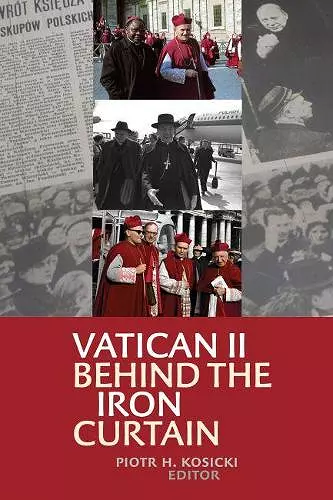Vatican II Behind the Iron Curtain
Format:Hardback
Publisher:The Catholic University of America Press
Published:30th Dec '16
Should be back in stock very soon

A substantial historiography has emerged across national and linguistic boundaries documenting the Second Vatican Council. And yet virtually no attention has been devoted to the links between the Council and the Catholic faithful who had found themselves living behind an iron curtain by the end of the 1940s. Historians of the Catholic Church have, in fact, mostly rejected the possibility that Communist countries played a role in the Council’s story, or that the Council in turn shaped the subsequent paths of those countries.
The goal of this volume is to begin writing Central and Eastern Europe back into the story of the Second Vatican Council, its origins, and its consequences. This volume assembles—for the first time in any language—a broad overview of the place of four different Communist-run countries—Czechoslovakia, Hungary, Poland, and Yugoslavia—in the story of the Council. Framing these is an account of how the Cold War impacted the Council and its reception. The book engages with both English-language scholarship and the national historiographies of the countries that it examines, o ering a global lens on the present state of research (covering all relevant languages) and seeking to propel that research forward. All of the chapters draw on both non-English secondary literature and original primary sources—some published, some archival.
In all four countries, religious aggiornamento went hand in hand with waves and spurts of political liberalization. Though short-lived in their initial form, civic aggiornamenti magnified the impact of religious aggiornamento. Every country behind the Iron Curtain was different, yet even across such diverse situations, one finds evidence that societies engaged with Vatican II—and, moreover, that the Council furnished a set of norms and aspirations that would play a significant role in the final years of the Cold War. The election of St. John Paul II in 1978†…, a pope from behind the Iron Curtain, lit a match, but the tinder had been set much earlier for modernization, reform, and an embrace of pluralism—even among Catholics living behind the Iron Curtain.
“An intriguing, well-informed, and riveting treatment of the much overlooked impact of the Second Vatican Council on the Soviet Bloc . . . succeeds in tossing away the longentrenched concept of the “Church of Silence” as applicable to the Communist period.”—Mikolaj Kunicki, St. Anthony’s College, University of Oxford
ISBN: 9780813229126
Dimensions: unknown
Weight: 480g
248 pages